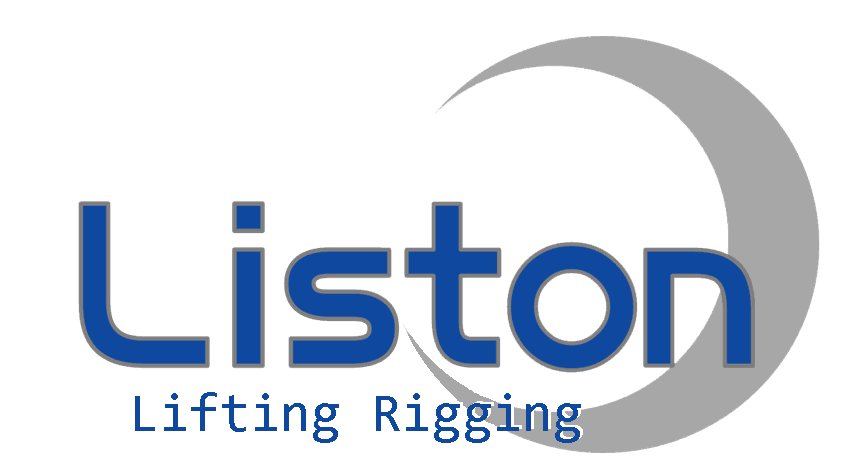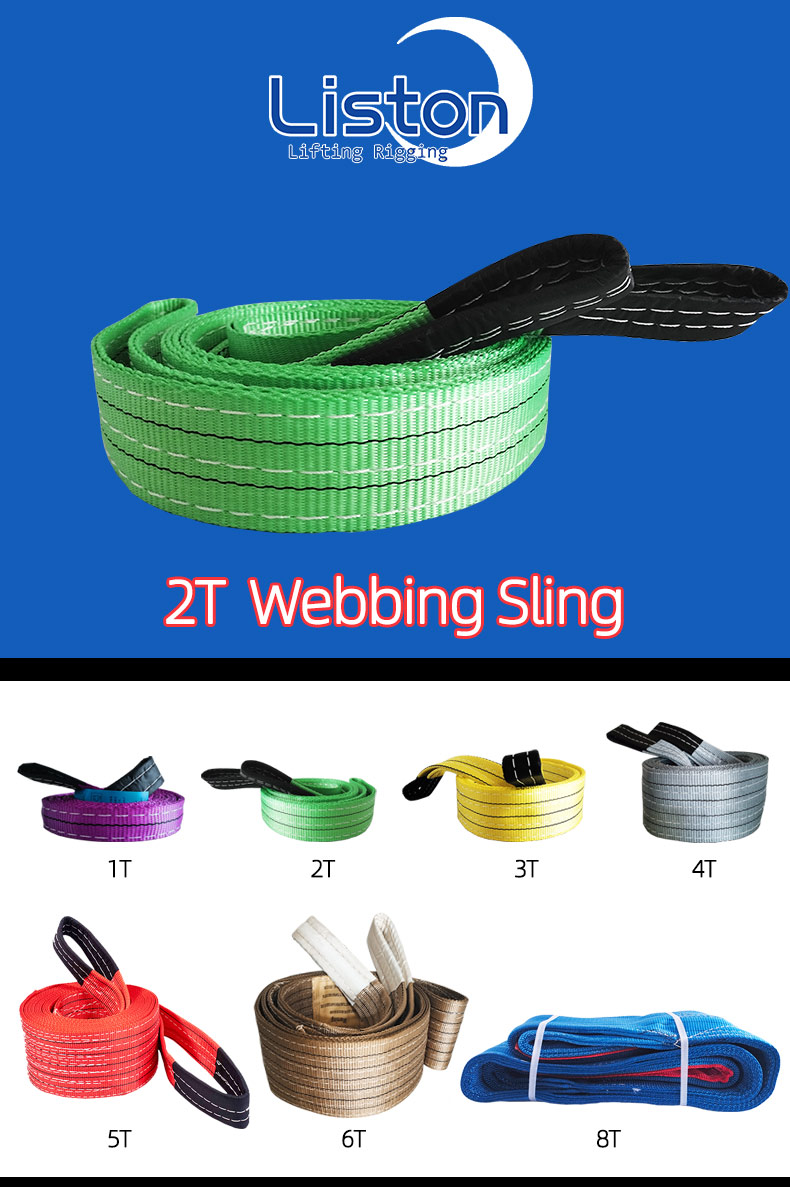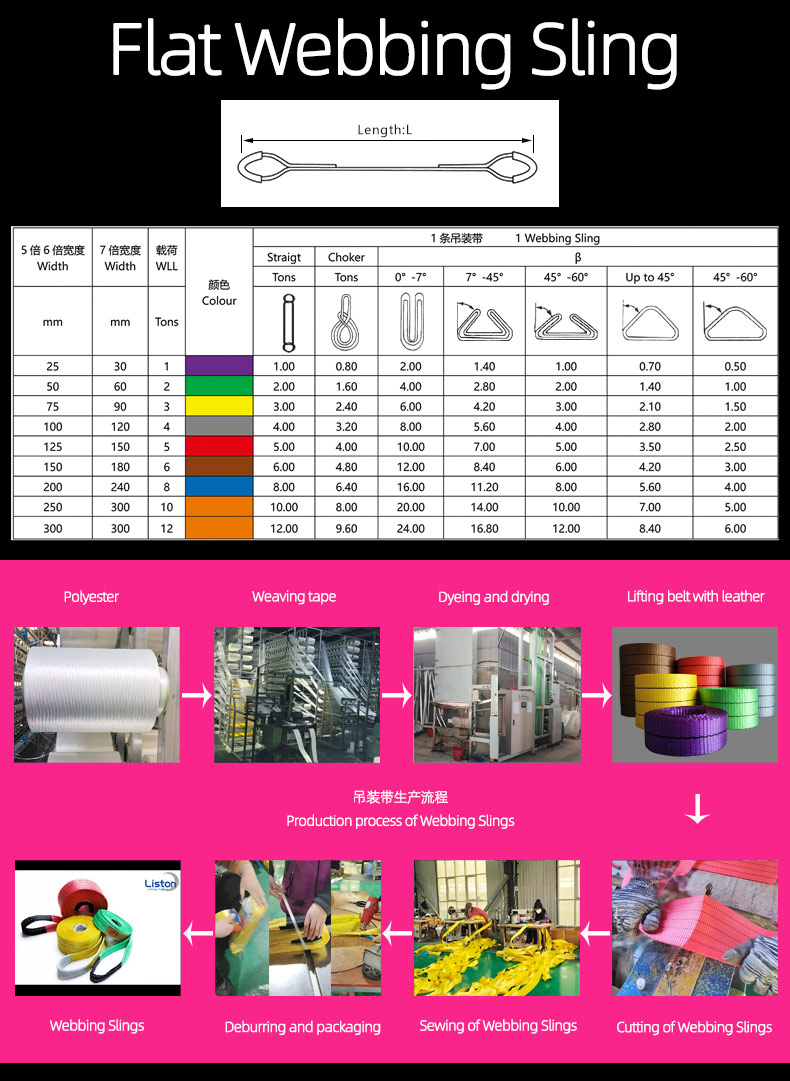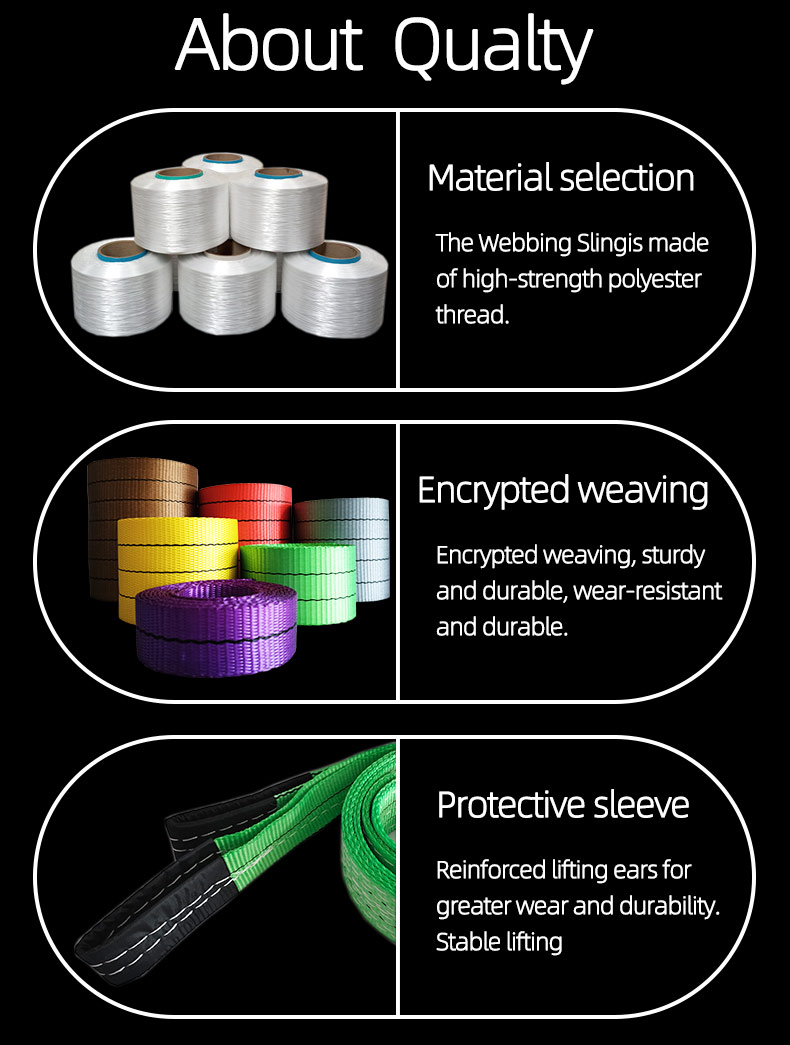2T Eye To Eye Webbing Sling
Flat webbing slings are used in a variety of lifting and rigging applications. They are commonly employed in the construction industry for lifting heavy materials such as steel beams, concrete panels, and machinery. In warehouses and distribution centers, flat webbing slings are used to handle and transport large and bulky items, such as crates, barrels, and equipment.
Moreover, flat webbing slings are widely utilized in the shipping and logistics sector for securing cargo during transportation. They provide a reliable and secure method for lifting and securing loads onto trucks, ships, and other transport vehicles. Additionally, these slings are used in the manufacturing industry for lifting and positioning components during production processes.
Benefits of Flat Webbing Slings
There are several benefits to using flat webbing slings for lifting and rigging operations. One of the key advantages is their flexibility, which allows them to conform to the shape of the load being lifted. This helps distribute the load evenly and reduces the risk of damage to the load or the sling itself. Furthermore, the soft and smooth texture of the webbing minimizes the risk of scratching or marring the surface of the load.
Flat webbing slings are also lightweight and easy to handle, making them convenient for workers to use. Their flexibility and ease of handling contribute to improved efficiency and productivity in lifting operations. Additionally, these slings are resistant to moisture and mildew, which extends their service life and makes them suitable for outdoor and wet environments.
Safety Considerations
While flat webbing slings are a versatile and essential lifting tool, it is crucial to follow proper safety practices when using them. Before each use, the sling should be inspected for any signs of damage, such as cuts, abrasions, or fraying. Any damaged slings should be immediately taken out of service and replaced to prevent accidents or injuries.
It is important to ensure that the flat webbing sling is properly rated for the intended load. Using a sling with a lower capacity than the load being lifted can result in sling failure and potential hazards. Additionally, the sling should be securely attached to the lifting equipment and the load, following the manufacturer’s guidelines and industry standards.
Proper training and education on the safe use of flat webbing slings are essential for all personnel involved in lifting operations. Workers should be familiar with the proper techniques for rigging, lifting, and securing loads using flat webbing slings. This includes understanding the angles and configurations that affect the sling’s capacity and the importance of maintaining a clear path for the load during lifting.





















